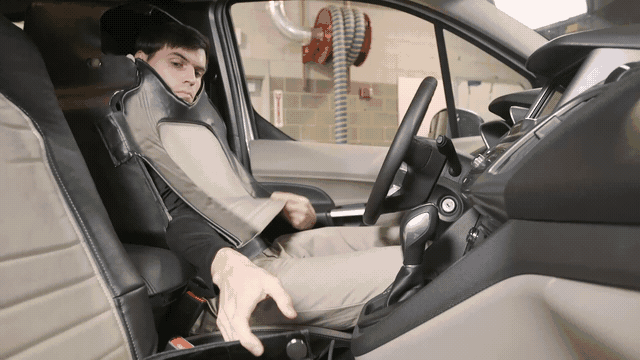Car companies and researchers want to know how the public will react once driverless cars are on our roadways. Will people freak out? Will accidents happen?
Right now, that’s hard to test since self-driving vehicles legally need a human onboard to operate. To get around this, Ford and Virginia Tech joined forces for an autonomous driving experiment. They put the driver in disguise—as the front seat.
“We need to solve for the challenges presented by not having a human driver, so designing a way to replace the head nod or hand wave is fundamental to ensuring safe and efficient operation of self-driving vehicles in our communities,” John Shutko, Ford’s human factors technical specialist, said in a press release.
To accomplish that, the study concealed a human driver in a “seat suit” in order to gauge pedestrian reactions to the car’s lighting signals. Its external lights indicate when it’s in motion, accelerating from a stop, or yielding.
https://www.youtube.com/watch?v=EwujR1ARsog
Ford’s test didn’t go unnoticed. Last month, folks in Arlington, Virginia, spotted this vehicle and thought it was a prank. A driverless vehicle was one thing, but realizing that empty car seat in the front actually had legs? That was a bizarre sight. An NBC reporter called the sight “one of the strangest things” he’d ever seen.
Rightly so.
Over the course of the study, Ford and Virginia Tech drove 150 hours and 1,800 miles, primarily in urban environments in northern Virginia. The van activated its external signals (a solid white light when it’s driving autonomously, a rapidly blinking white light when accelerating from a stop, and dual white lights moving horizontally when yielding to a stop) more than 1,650 times. The team positioned the lighting signals toward the top of the front windshield—near where you might normally look for a driver’s eyes or face. Onboard cameras captured the van’s environment, as well as reactions from nearby pedestrians and drivers.
Hopefully this autonomous driving experiment yielded some interesting results. If not, it certainly yielded a hilarious Halloween costume idea.
H/T TechCrunch



